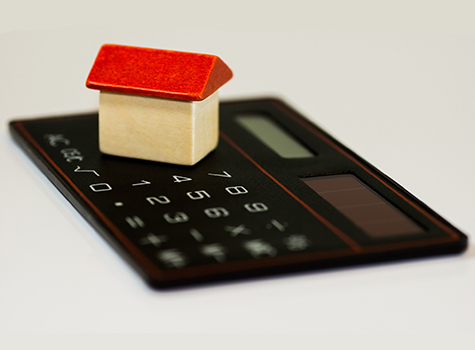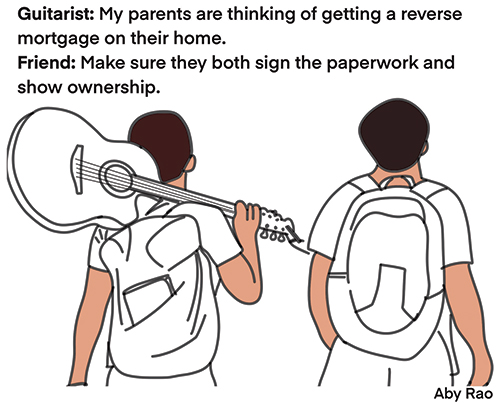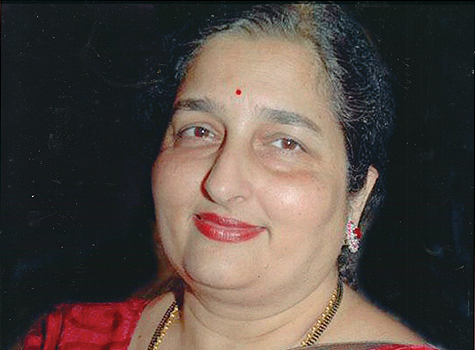
Reverse home mortgages have a lot of bad memories and connotations associated with it but in last 10 years or so, I must say, it has turned around and become much simpler. Let us define what it is first: a reverse home mortgage allows you to tap into the increased value of your home without selling it. Many of us like where we live, our home has not become dangerous enough yet so that you can continue to live there for a few more years; but we are still short on cash to support our expenses in retirement. That is when tapping into the appreciated equity of your home may be a good solution.
With a reverse mortgage, we can convert our home equity into a 1) lump-sum amount 2) a monthly payment or 3) a line of credit and still be living in that home. Also, unlike a traditional mortgage or a home equity line of credit (HELOC), we do not have to make any payments on the loan as long as we remain in the home. The most common reverse mortgage is known as Home Equity Conversion Mortgage (HECM), and you must be 62 or older to become eligible to borrow against your home equity.
HECMs are costly (as are the common home mortgages, generally); if you and/or your spouse might want to relocate someday or if your home is not made suitable for aging in place you may be better off selling and downsizing.
 Your loan limits generally follow a formula which depends on value of equity in the home, your age and current interest rates. Banks must make sure that when the time comes for them to recover their invested value in the home (the total loan) that they will be able to get it.
Your loan limits generally follow a formula which depends on value of equity in the home, your age and current interest rates. Banks must make sure that when the time comes for them to recover their invested value in the home (the total loan) that they will be able to get it.
Your cost for getting into such an arrangement is also moderate to high. The home must be appraised, then there is mortgage insurance of generally 2 percent. Then there is closing costs and lenders’ origination fees. Some of these fees are variable and I would think can be negotiated depending on how credit worthy the banks think you are. Another noteworthy point is that the property taxes and the home insurance are always your responsibility.
From the borrowers’ point of view, you need to know or well understand ahead of time as to how this extra cash will be used. One should not borrow without such plan in place first. One thing about reverse mortgage is that there is no do-over (no second chance).
There have been cases in the past that the borrower was only one party, say the husband, and if that party dies then the wife had to sell the home and get out of it even if that was not the right thing to do. In recent times, if you are married and only one of you borrows things can still get dicey. A good example of this would be if there is only one borrower and he/she has to be away or be elsewhere like in a nursing home or assisted living, the loan could come due, and the other spouse may have to move. The point is that all such considerations must have been thought of before the final decision is made. Most of the banks these days would insist on both spouses borrowing together.
After both parties are gone, the lender will get back its money and the accumulated interest on the HECM which you did not have to pay when you were living there. If the heirs wish to keep the house for whatever reason, then they will have to pay off the entire amount to the lender.
I wish to turn our attention to another important subject, which is always part of the equation, and that is the tax implications of reverse mortgages. If not planned for at the time of borrowing, subsequent mortgage interest tax deductions may be lost for the borrower or their heirs. HECM is the only reverse mortgage insured by the Federal Government and it is available only through FHA approved lenders. One salient feature of HECM is that money received is tax-free. And that is the case because reverse mortgage is nothing but a loan against an existing asset. All this comes under standard rules of IRC section 163(h).
Basically, it comes down to how should a reverse mortgage and the accumulated interest on it be treated when the time comes to claim all this on your income taxes returns (1040). A reverse mortgage is still indebtedness against a primary residence. The cumulative mortgage interest is repaid when the reverse mortgage finally terminates; under IRC section 163(h) mortgage interest is tax-deductible only when it is actually paid. That is a big deal for a reverse mortgage because the borrower is typically not making any payments on an ongoing basis. Thus, if a mortgage merely accrues and compounds, there can be no deduction on a yearly basis.
When the time comes to typically make a lump-sum repayment of a reverse mortgage, the cumulated loan interest is paid then too, all at once; hence the taxpayer, whoever it is, must make sure that there is enough taxable income that year to allow the additional itemized deduction to offset your income. Otherwise, this big benefit is lost. The simplest way is, during that tax year, to create enough taxable income to absorb additional mortgage interest deduction. This might be accomplished by an IRA distribution or ROTH conversion for that year or even by showing additional capital gains which may not be as helpful as the first two ideas. What is clear is that much advance planning is desired, almost necessary.
Mo Vidwans is an independent, board certified financial planner. For details visit, VidwansFinancial.com, call 734-476-0579 or write to: mvfinancial@yahoo.com



